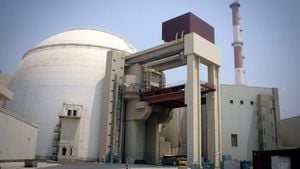On November 20, 2024, the Biden administration unveiled yet another military support package for Ukraine, totaling $275 million. This announcement from the Pentagon signifies the United States' continuous commitment to bolster Ukraine in its protracted conflict with Russia. The assistance for Ukraine has reached remarkable levels since the full-scale invasion commenced, with this being the 70th such military package initiated by the U.S. since the war began.
The military aid package comprises various military resources, including ammunition for High Mobility Artillery Rocket Systems (HIMARS), artillery shells of various calibers, and unmanned aerial systems. Javelin anti-tank systems and TOW missiles are also included, alongside chemical, biological, radiological, and nuclear protective equipment to fortify the Ukrainian defense against any potential threats.
Particularly noteworthy is the inclusion of landmines as part of this assistance, which Ukrainian President Volodymyr Zelenskyy emphatically highlighted during his address. He expressed gratitude for the bipartisan support received from the United States, recognizing its significance as Ukraine continues to stand firm against Russian military advancements. "The United States has announced...essential mines to stop Russian assaults. This will significantly strengthen our troops on the front lines," he stated.
The aid package is delivered under the Presidential Drawdown Authority (PDA), allowing for the swift transfer of military gear directly drawn from U.S. stockpiles. This method enables the U.S. to respond quickly to the urgent needs of Ukraine's military, ensuring they are well-equipped to handle the battlefield challenges posed by invading forces.
Defense Secretary Lloyd Austin remarked on the strategic importance of this move, noting how the continued military aid will meet Ukraine's pressing battlefield needs. Austin, who was attending the ASEAN Defense Ministers’ Meeting Plus, asserted, "Later today, the White House will be announcing additional security assistance for Ukraine worth up to $275 million to meet critically needed demands..."
U.S. assistance has continuously evolved as the dynamics of the conflict shift. Just recently, the Biden administration relaxed the existing restrictions on the use of long-range precision weaponry for Ukraine, empowering them to target Russian assets more effectively. The move allowed Ukraine to carry out successful strikes against Russian military positions using American-made MGM-140 Army Tactical Missile Systems, also known as ATACMS.
While the U.S. gears up to send significant weaponry, it does not go unnoticed by Russian leadership. President Vladimir Putin indicated Russia's willingness to lower the threshold for retaliation, stating any sophisticated air and space attack crossing the Russian border could potentially invoke nuclear responses. He emphasized, "We will...consider such a possibility...when we receive reliable information about...air and space attack assets crossing our state border." This sentiment underlines the heightened stakes and potential escalation between the two nations.
The Pentagon, meanwhile, has acknowledged Ukraine as one of the most heavily mined regions globally, exacerbated by the conflict with Russia. Reports have indicated almost one-third of Ukrainian territory is now heavily mined, with the new aid package aimed at slowing the aggressive advancements of Russian and North Korean troops through defensive measures like landmines. These mines, which are reportedly battery-operated, become inert after activation, minimizing long-term risks for civilians.
The comprehensive details of the recent aid package revealed extensive provisions: it includes not only artillery and missile systems but also small arms and various munitions. Beyond weaponry, it provides necessary spare parts, services, transportation, and training for Ukrainian forces. All these elements are intended to uphold Ukraine's defense efforts against continued Russian aggression and secure its territorial integrity.
The gravity of the situation is intensified as the U.S. Embassy in Kyiv has recently swung back to operational status, albeit under the threat of probable Russian air attacks. U.S. officials have warned its citizens about potential escalations and have urged caution.
On the global stage, this military assistance reinforces U.S. interests and commitments to partners in Europe. It portrays not only military support but also America's continued diplomatic engagement with Ukrainian sovereignty amid this regional conflict. The assistance aligns with efforts from approximately 50 allied nations as they construct unified strategies to counteract Russian expansionism.
Overall, this latest military aid package epitomizes the prevailing geopolitical currents and emphasizes the U.S.'s intention to play a pivotal role within the conflict. Ukrainians remain resilient as they adapt and respond to the unending challenges, reinforcing their defense capabilities with the backing of international allies, especially the U.S., as they strive to safeguard their nation against external pressures.



